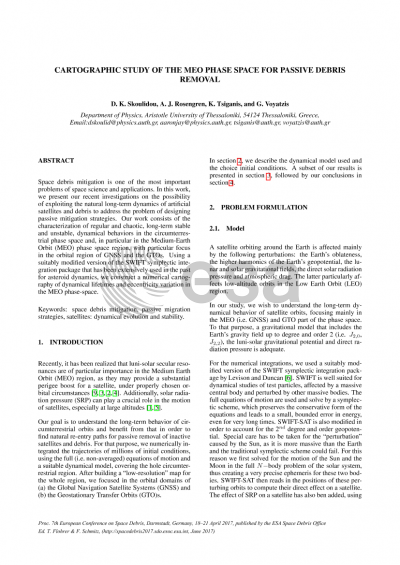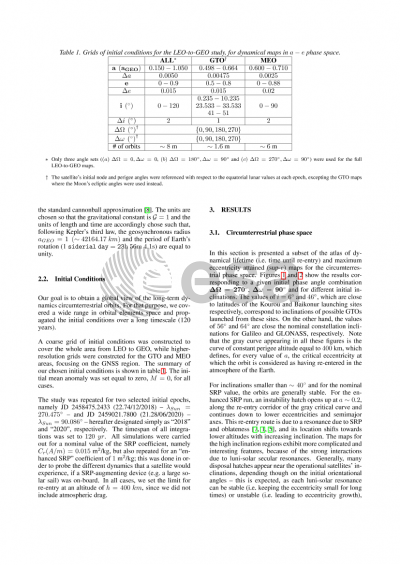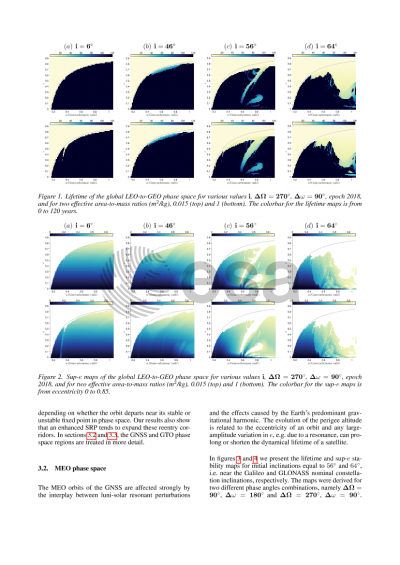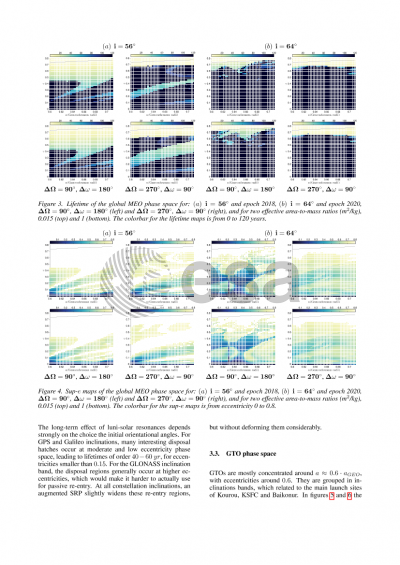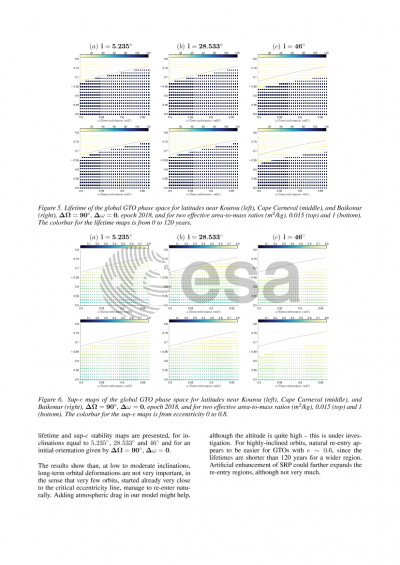Document details

Abstract
Resonances are regions in the phase space of a dynamical system in which the frequencies of some angular variables become nearly commensurate. Because of this feature, many communications, navigation, scientific and military satellite missions have employed these orbits (e.g., orbits with mean motion commensurabilities to the Earth's rotation rate are important for ensuring repeating ground tracks). Yet, such regions also have a profound effect on the long-term dynamics of the system, giving rise to a rich spectrum of highly complicated behaviors. Orbital resonances are ubiquitous in the Solar System and are harbingers for the onset of dynamical instability and chaos. Knowledge of the nature and consequences
of resonances in the orbital motions of resident space objects is therefore of fundamental importance for all efforts to assess debris mitigation measures --- efforts which have also recently led to a new paradigm in post-mission disposal, one that seeks to cleverly exploit dynamical instabilities and the associated eccentricity growth for re-entry and destruction within the Earth's atmosphere. In fact, the process of dynamical clearing of resonant orbits is well illustrated by the paucity of asteroids observed in the Kirkwood gaps. Recently, it has been realized that lunisolar secular resonances (i.e., those caused by the Moon and the Sun on long timescales) are of particular importance in the medium-Earth orbit regime of the Global Navigation Satellite Systems. Thus, the Moon and the Sun may provide a substantial perigee boost for the satellite under
properly chosen circumstances. For other conditions, the perturbation may be minimized to obtain a relatively stable orbit. In this talk, we will present our recent investigations on the detection of regular structures and chaotic behaviors in the full medium-Earth orbit (MEO) phase space, with a particular focus on the navigation satellite constellations and the geostationary transfer orbits (GTOs). Using a suitably modified version of the SWIFT symplectic integration package (Levison and Duncan, 1994) that has been extensively used in asteroid dynamics, we will provide a numerical cartography of the MEO phase space to show the geometry and extent of the stable, resonant, and chaotic domains. We will present an orbit stability taxonomy of the entire MEO region, spanning around 10 million orbits, necessary for the correct implementation of the passive debris removal ideology GNSS and GTOs. This talk will link theoretical
aspects of resonant and chaotic dynamics with practical applications, which can lay an essential foundation for future developments.
Preview
